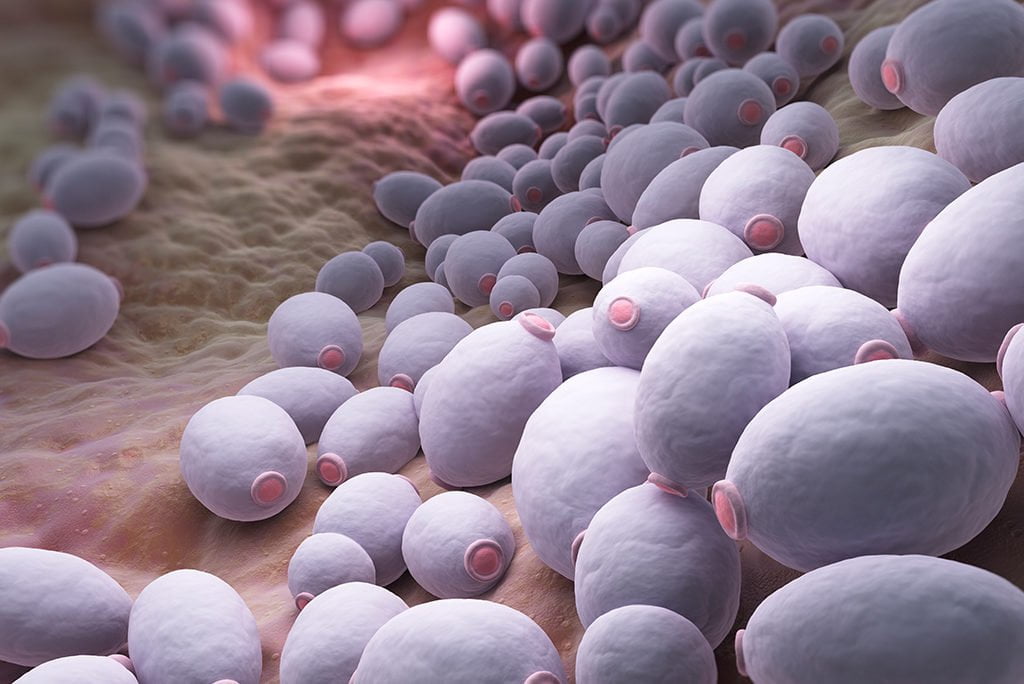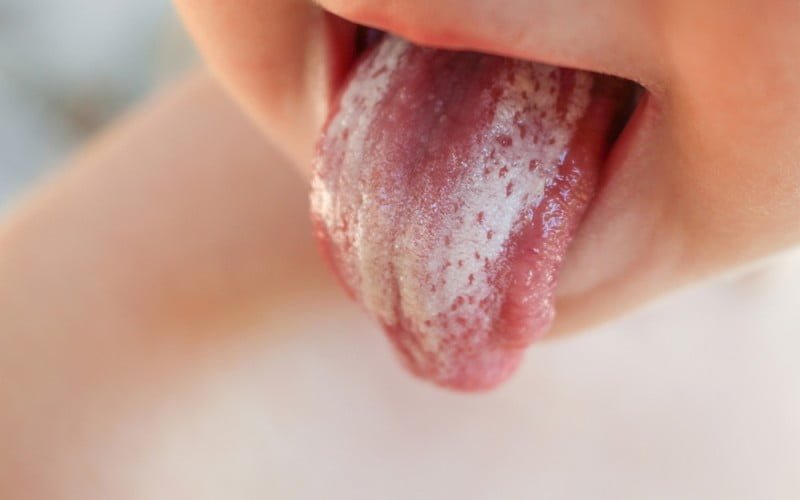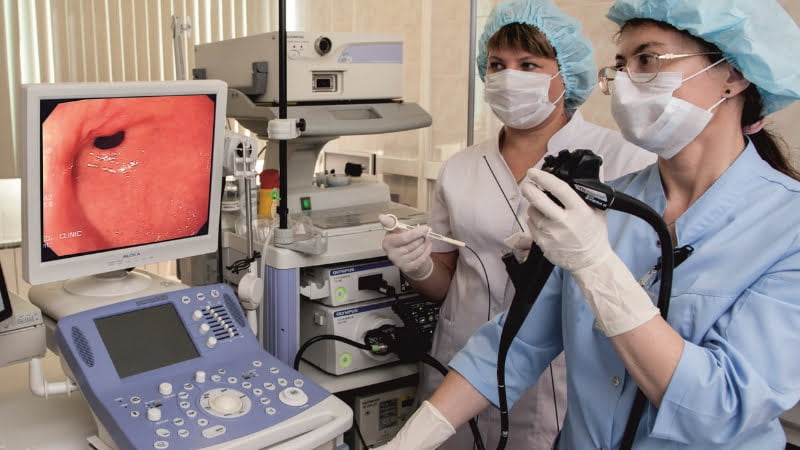Candidiasis (Candida infection) is one of the most worrisome health problems. In most cases, this disease causes infections in the mouth, throat, and esophagus. Although they are uncommon in healthy individuals, they are extremely dangerous in those with immunocompromised systems, such as those with HIV/AIDS, leukemia, diabetics, and those on corticosteroids, radiation, or chemotherapy. Another group includes people who often took antibiotics and those who had esophageal motility disorder (cardiac achalasia and scleroderma). In this article, Illume will compile thorough material to provide you with an overview of candidiasis-related diseases.

What exactly is Candidiasis (Candida infection)?
Candidiasis is an infection caused by the yeast Candida (a kind of fungus). This fungus often grows on the skin and within the body, most notably in the mouth, throat, intestines, and vagina. However, when the Candida fungus, invades the body, it may not cause any health concerns for the patient. If the environment within the mouth, throat, or esophagus changes in a way that promotes fungal growth, Candida can multiply uncontrollably and cause an infection.

Thrush or oral thrush refers to Candida infections in the mouth and throat. A fungal vaginitis occurs when you have a Candida yeast infection in your vagina. Esophageal candidiasis (the tube connecting the throat to the stomach) is commonly referred to as esophagitis or Candida esophagitis. It is also one of the most common infections in HIV/AIDS patients.

Etiology (Causes of Candida infection)
Candida fungus are often found in the mouth, throat, and digestive tract. They do, in reality, constantly present within the human body and do not create any problems. It only grows when certain conditions exist, such as a weakened immune system due to antibiotics disrupting the natural balance of bacteria in the body, or the use of drugs for cancer treatment or corticosteroid drugs.
Furthermore, certain birth control pills can raise the risk of vaginal candidiasis. Also, weather factors such as scorching sun or a lack of personal hygiene, as well as wearing tight garments, are among the causes of this infection.
Several other risk factors can increase the possibility of a Candida infection, including:
- Obesity: This fungus frequently develops in skin areas that rub or come into regular contact with each other. This is also why persons who are obese have a higher risk of yeast infections since their skin is folded in so many spots. Moreover, obesity leads the body to sweat more, providing a humid environment favorable for fungus to multiply and grow.
- Pregnancy: Pregnant women typically have higher-than-normal estrogen levels. In addition, women are more likely to get candida infections as a result of this.
Symptoms of Candida infection
Depending on the region infected with Candida, each patient will show distinctive signs and symptoms. If you have a fungal infection in your mouth or throat, you may experience some of the following symptoms:
- White spots on the inner cheeks, roof of the mouth, tongue, and throat
- Soreness, redness or itchiness of the skin
- Cotton-like feeling in the mouth
- Loss of taste when eating
- Difficulty swallowing (fungal infection in the esophagus)
- Cracking, redness or discomfort inside or around the mouth, possibly with little bleeding


In addition, if you have fungal vaginitis, you may encounter some of the following symptoms:
- Uterine infections, itching, soreness, or discharge
- Soreness during intercourse (vaginal yeast infection)
When the Candida fungus enters the blood, serious symptoms such as fever, shock, and multiple organ failure can occur.
Risk of having Candida infection

Candidiasis in the mouth, throat, or esophagus is rare in healthy people. People who are at higher risk for getting candidiasis in the mouth and throat include babies, especially those younger than 1 month of age, and people with at least one of these factors:
- Wearing dentures
- Having diabetes
- Having cancer
- Having HIV/AIDS
- Using antibiotics or corticosteroids, especially inhaled corticosteroids for diseases such as asthma.
- Taking dry mouth medicines or having a medical condition that causes dry mouth
- Smoking
Most patients who get candidiasis in the esophagus have immunocompromised systems, which means their bodies are unable to fight infections properly. This includes those living with HIV/AIDS as well as those suffering from blood cancers such as leukemia and lymphoma. Candida in the esophagus is frequently associated with candidiasis in the mouth and throat.
Testing and diagnosis of Candida infection
Generally, candidiasis in the mouth or throat can be diagnosed simply by looking inside. A doctor can also make a diagnosis by collecting a tiny sample from a patient’s mouth or throat. The sample is submitted to a laboratory for examination, typically under a microscope.
Endoscopic testing is one of the most often used procedures for detecting candida infections in the esophagus. An endoscopy is a technique that uses a tube with a light and a camera to inspect the digestive tract. In some cases, a doctor may give antifungal medicine without performing an endoscopy to evaluate a patient’s symptoms objectively.

Treatment of Candida infection
Patients can choose different treatment methods depending on the body part of their Candida infection, including:
Fungal infections of the mouth, throat, or esophagus: Antifungal medicines such as miconazole, clotrimazole, and nystatin are commonly used to treat these infections. Antifungal medicines used to treat mild to moderate infections of the mouth and throat are often prescribed as lozenges or swallowing pills for 7-14 days. For severe infections, the most common treatment is fluconazole – an oral antifungal medicine. Other prescription antifungal medicines may be used if a patient is unable to take fluconazole or suffers other health problems after taking fluconazole.
Candidiasis of the skin: Certain topical creams or antifungal medicines are helpful treatments for this disease. Furthermore, the infected skin areas must be treated and cared for according to the doctor’s instructions, keeping them dry, clean, and free of cracks.
Vaginal Candidiasis: Antifungal medicines in the form of tablets, ointments, creams, or suppositories are typically prescribed for vaginal usage. Clotrimazole, butoconazole, tioconazole, nystatin, and miconazole are some of these medicines.
Candida infections in blood: Intravenous antifungals such as fluconazole or voriconazole are commonly used to begin treatment. Patients who have a low white blood cell count must be switched to another injectable intravenous antifungal, such as micafungin and caspofungin.
Prevention of Candida infection
Here are some methods to significantly reduce the risk of Candida infection, including:
- Unless instructed by your doctor, do not self-medicate with antibiotics
- Maintain good personal hygiene by keeping your skin clean and free of chapping
- Do not abuse anti-inflammatory or pain medicines for a long period of time.
- Quit smoking
- Manage properly your blood sugar, especially for individuals with diabetes
- Maintain good dental hygiene
- Limit your intake of stimulants such as alcohol
- Rinse your mouth or brush your teeth after using inhaled corticosteroids
- Wash your hands often with hand sanitizer
- Adopt a balanced and nutritious diet


